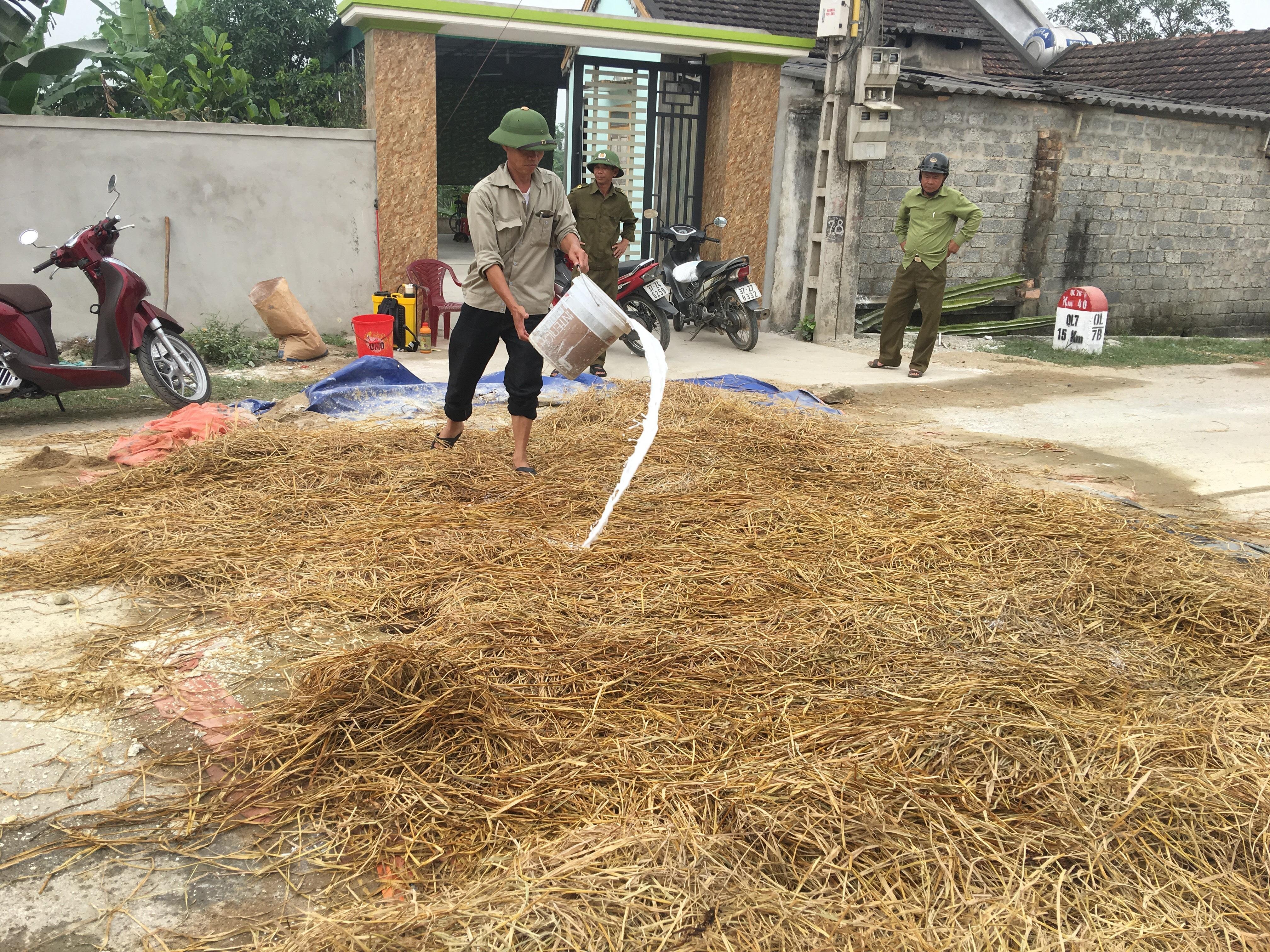Pig herd in Nghe An found positive for classical swine fever
(Baonghean.vn) - A herd of pigs in a military unit's breeding area died of illness, tested negative for African swine fever but positive for classical swine fever.
This is the test result on April 8 at the pig herd in Battalion 17, Nhan Son commune, Do Luong district, Nghe An. Currently, 5 pigs out of the total herd of 65 pigs of Battalion 17 have been destroyed.
The area where Battalion 17 is stationed is adjacent to Minh Son commune, Do Luong district, where African swine fever has appeared. A few days ago, pigs here got sick and died.
According to Mr. Vo Dinh Khoa - Head of Do Luong Veterinary Station, before 30 out of 65 pigs in Battalion 17 got sick, this herd of pigs was not vaccinated according to the correct farming process.
On the morning of April 8, Do Luong Veterinary Station directed the vaccination of all pigs of Battalion 17. At the same time, organized the spraying of disinfectants in the barn area and surrounding areas.
 |
The checkpoint in Minh Son commune (Do Luong), where African swine fever appeared, always had people on duty, spraying lime water for disinfection. Photo: Ngoc Phuong |
African swine fever appeared in 1921, classical swine fever appeared in ancient times. There is a vaccine to prevent classical swine fever, however, if the pig dies of the disease, it must be destroyed according to the correct procedure. The characteristics of pigs with classical swine fever and African swine fever are similar, such as high fever, loss of appetite, runny nose and tears, and pin-shaped petechiae in thin skin areas.
Up to now, after 5 days of the outbreak of African swine fever in Minh Son commune, no new outbreaks have occurred in Do Luong district. At the 2 checkpoints in the commune, the correct procedures have been followed, lime has been spread regularly, and disinfectants have been sprayed when vehicles pass through. The number of people taking turns on duty at the 2 checkpoints includes 3 people, 2 commune police officers, and 1 veterinary officer.
Classical swine fever is caused by a virus that is highly contagious and infectious, creating an epidemic that is very difficult to control for the livestock industry. In addition to the problem of feeding pigs to grow quickly, viral diseases such as classical swine fever are classified as diseases that must be reported to veterinary control agencies when signs of an epidemic appear.
The severity and damage caused by classical swine fever to the livestock industry are enormous, so disease prevention for pigs needs to be carried out seriously and systematically to avoid outbreaks due to poor disease prevention. From specialized knowledge, this is a disease that causes many obstacles for farmers who want to get rich from raising pigs.
- Classical swine fever progresses and develops rapidly but does not show clear symptoms. Infected pigs die suddenly and are difficult to observe and predict. The most typical observable symptom is that the pig stops eating feed, has a high fever above 40 degrees Celsius, and appears tired, lethargic, and may vomit. The thin skin areas of the ear, armpit, and groin have tiny red dots, which gradually turn purple. Pigs have difficulty breathing, rapid pulse, and die 1 to 2 days after the onset of the disease.
- The mortality rate of pigs infected with hyperacute classical swine fever is up to 100%. Young pigs are more susceptible to hyperacute classical swine fever than adult pigs.




.jpg)



